Authors: Vollketten, Souroy
We are returning to the French part of the series with this article. France has a long and glorious military history and the first part clearly did not do justice to some of the wonderful inventions concocted to win the war and the single armoured train I posted needs further elaboration. A single individual in particular is the common denominator this time, so this is a ‘Special’ for just one man and his multiple designs.
I’ve been posting some amusingly bad and some actually fairly decent tank designs from Patent archives, but sometimes you find something which warrants a segment all by itself. Even the armchair tank historian will have heard of the designer Monsieur Boireaux (sometimes spelled ‘Bouralt’or ‘Boiralt’). He came up with the wonderful ‘Boireaux machine’ back in 1915 as means to cross shell-shattered ground. It worked, but was hard to control and was unarmed. It was actually rather an ingenious, if not the most practical vehicle. After some time and digging, I found the patent for one of his armoured trains with some help from Souroy and here are the results.
Behold, the Boireaux Device!
This was not the end of Monsieur Boireaux’s endeavours however. This is his ‘armoured tank train’ concept from September 1917, featuring two St.Chamond tanks slaved together through double coupling with additional power unit of 350hp between them. The images show a 1/72 scale model of the 72 tonne concept.
Photo credit: Souroy and ‘Histoire’ Magazine Oct.2013
Now, this is not the end of the story for Monsieur Boireaux, who continued with this concept in 1917 and gave us this tank again from his armoured train concept, this time using a 700hp engine with the M.1897 75mm gun. Armour is between 16 and 32mm and fully entrained in three sections, the weight is 125 to 130 tonnes.
His armoured train concepts didn’t manage to make it in WW1, but he didn’t drop the idea and in June 1936, he designed an improved version as means of coupling multiple Somua S35 tanks, so that they could cross very wide obstacles and anti-tank trenches.
Within that design was a bonus of a very heavy ‘fatter’ tank again using the central additional power unit concept.
He also designed a novel track suspension system, where the front wheels can be lowered to improve traction:
So putting them together you actually have a new French tank which could be used in game. And she is a real beauty.
So there we go, one patent spawns a whole raft of interesting if perhaps a little optimistic tank designs by Monsieur Boireaux and by patent standards, his stuff is actually pretty good – so not in the ‘Absurd’ class in general, but they fit within the topic, so this special is really about two good designs, which could actually be used in game [Note that France is definitely not short of tanks for WoT already] and to show that sometimes those odd patents yield useful research.
There will be more from France yet to come and those are less well thought out than this for sure. So Part V will be ‘back to Absurdity’.


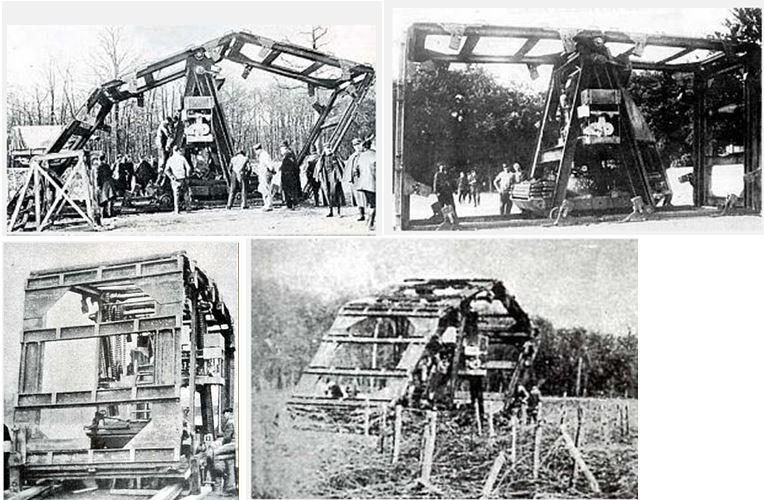
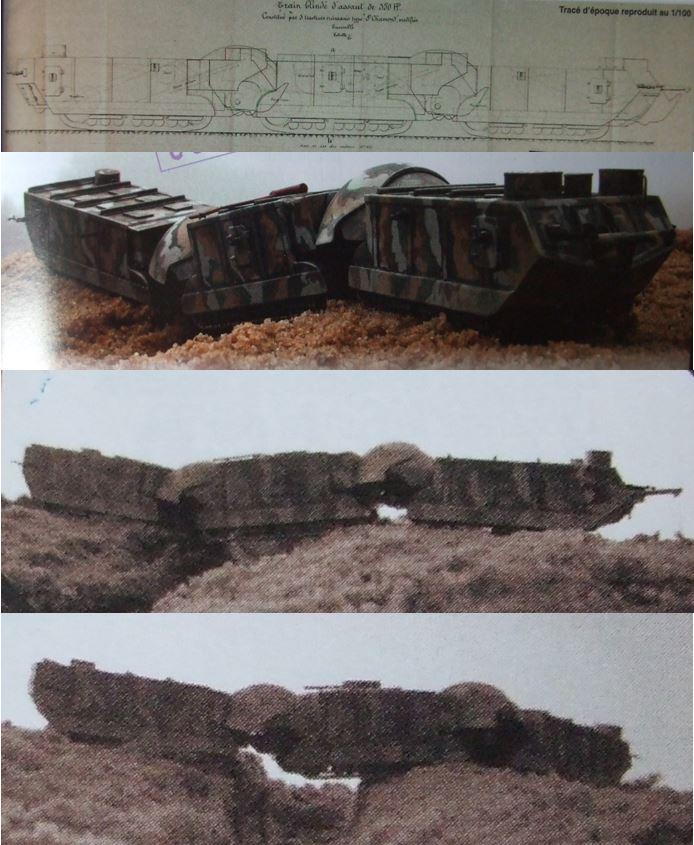
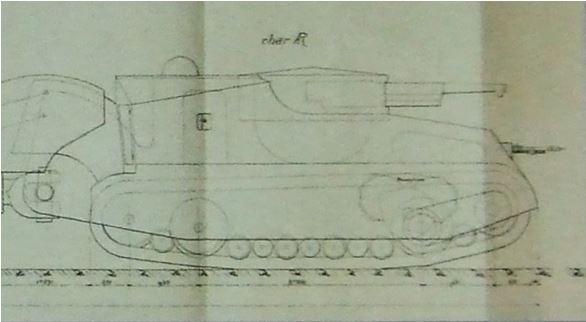

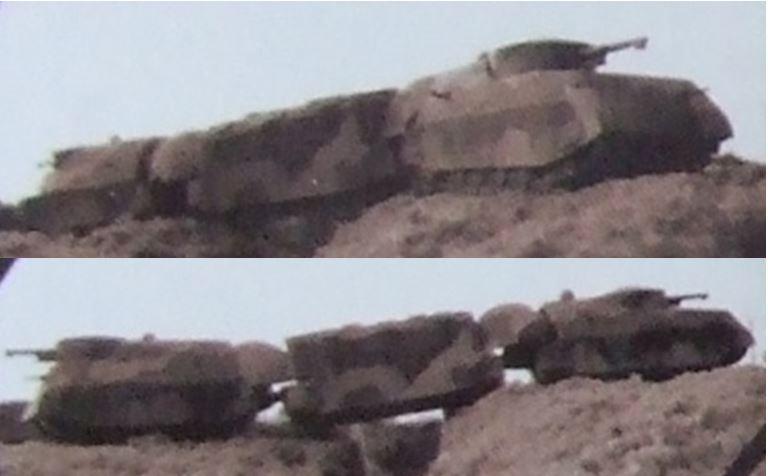

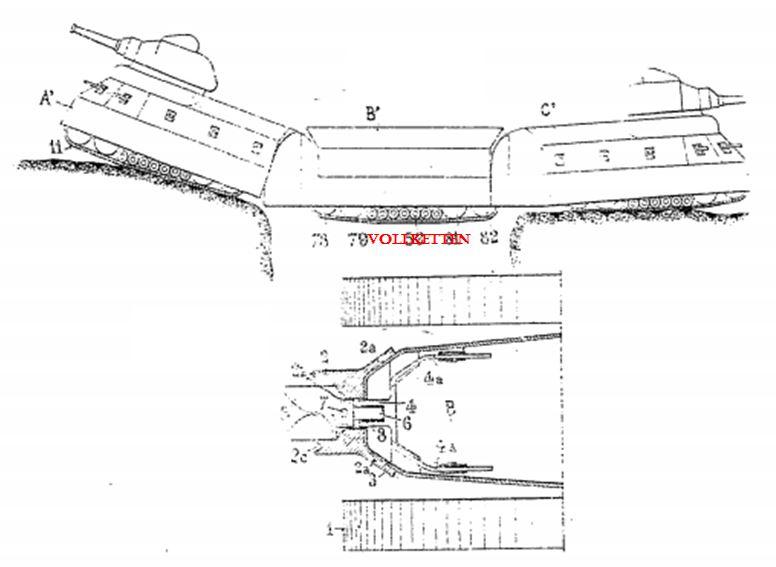
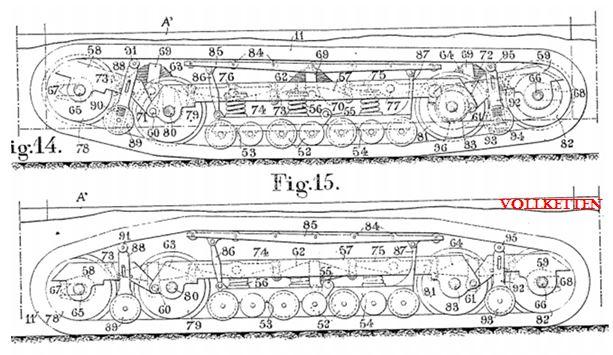
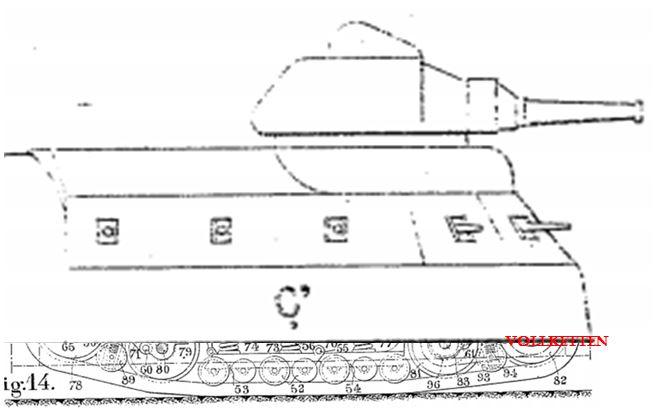
the origin of lemming train!
:D So true…
So… Im guessing TOG is a ripoff, and in reality is made from 2 regular tanks (rear one without the turret obviously) and covered by a sheet of metal to pretend its one tank? That would make so much sense!
No, the rear actually houses a credit printing facility, everyone knows that. :) And water/tea reserves for the crew obviously.
The ancestor of the Bandvagn, awesome!
well, square wheels may sound stupid, but they have been used, altough i do not know from what year
http://i.ytimg.com/vi/f6RtTo3aNr8/0.jpg
All those MG ports…all those dead radiomen.
KV-5 crying in a corner.
Just imagine how many radiomen have died since the KV-5 was introduced. Must be near a million hosed out of the R2D2
This train concept would have been viable in the trenches of WW I , but in the 1930′s it would have been outdated and impractical.
Quite frankly, if I were a German soldier manning an AT gun in 1944, and saw a Boireaux device creeping up on me in a field, I’d just go: “nope” and get the fuck out of there.
If someone is crazy enough to drive that thing into battle, I would be legitimately concerned for my own life, for fear of a crazed Rambo-like character jumping out of the burning wreck and dealing berserker fury upon his enemies using only his knife and bare (or bear, don’t know which is more terrifying to be honest) hands.
This remind me the story of the M4 Sherman “Hartmannswillerkopf” of the 501e RCC (2e DB):
13th September 1944 – Remoncourt
Lieutenant Christen’s “Hartmannswillerkopf” is hit at point-blank range by a well camouflaged 50mm: the shell grazed the loader (Miguras), who just bent down to grab a biscuit which fell to his feet, and pierced the chest of our comrade Hall, a young 21 years old English who enlisted in the Free French Forces in 1941.
The 4 crewmembers lept down of the tank and the driver, corporal Henri Vilette, who saw the German gun, took a dagger off his boot, threw himself on the terrorized servants and, in a fierce hand-to-hand fight where he was alone against five adversaries, killed several of them.
His belt is ornated of a collection of insignias and iron crosses of the Wehrmacht.
During the same combat another Sherman, the “Dixmude”, was hit (fuel tanks pierced) but this time without damage on the crew.
The corporal Vilette was killed in action a week later (20th September 1944).
i want that lemming train as T3 HT .. OMG !! yeah !
It IS absurd – those designs couldn’t cross such wide trenches as advertised. Somehow they are always depicted with central unit over the ditch ;) , guess why…
Obv because the firsr bit would fall in.
That is why we have our glorious TOG II*
I would not be so sure about that. As long as the trench/ditch is not wider then the lenght of the front tank this set up would allow it to cross it as long as the couplings where strong enough to take that force exherted on them. The couplings themselves visible on the drawings and on the picture of the scale model does seem to be dimensioned large enough to handle that. The front tank could slide a bit into the ditch itself if it was wider then the tank is long and climb back up with the added horsepower and tracktion provided by the back 2 units.
Not totally absurd idea but there are more practical ways of solving the crossing a ditch problem… Countermeasures to this tank would propably come the same instant one of these things showed upon the battlefield. Like a wire controlled mortar beeing put in place just before that thing would cross and rip it apart wit a blast to the belly… or simply a magnet attached mine with a timer put in place by a soldier when it crosses….
There is a lot of “as long” ;) in this statement, it implies that certain perfect conditions are needed for success.
And, couplings are hinged on all drawings, this train would simply fold down.
Only two. 1. Wider ditches would stop serving their purpose due to them beeing wrecked by artillery more effectively. 2. The couplings seem dimensioned large enough to handle the force of the front unit wanting to dip into the trench when crossing. I do not think it was ment for the entire front unit to dangle in the air on the coupling. Just large enough to keep the front end up using the principle of leverage.
Even if the ditch was wider then the lenght of the tracks it would not have been a big deal. If it would not be able to climb up on the other side it would just reverse back out of it thanks to that hinged coupling and still be in action. A regular tank would be stuck with no way out and effectively out of the action/sitting duck for target practice.
Nixxie, Baldrickk, you are wrong, because you misunderstood the concept.
This is not really an “armored train”, but more of a giant caterpillar. The junction between the bits is not just an articulation, but a lot of hydraulic devices, that would have allowed the first bit to maintain alignement with 2nd and 3rd bit while crossing the trench. Doing so, the first part wouldn’t fall in.
It’s almost the same concept with bandvagn and UDES xx20, except they are done with only 2 segments and not 3.
For those who are wondering, “Boireaux” is to pronounce “Bwaro” :D
Wow that train thing looks like something that came out of Zelda’s arsenal (from “Terra hawks” series) :-)
Sorry you lost me at “France has a long and glorious military history” Still laughing.
15,000 French Rifles for sale some never fired, most only dropped once.
The military history of France encompasses an immense panorama of conflicts and struggles extending for more than 2,000 years across areas including modernFrance, the European continent, and a variety of regions throughout the world.According to the British historian Niall Ferguson, France has participated in 168 major European battles, out of which it won 109, drew 10 and lost 49, which according to him makes France the most successful military power in European history.[1]
Get your facts instead of repeating moronic stuff.